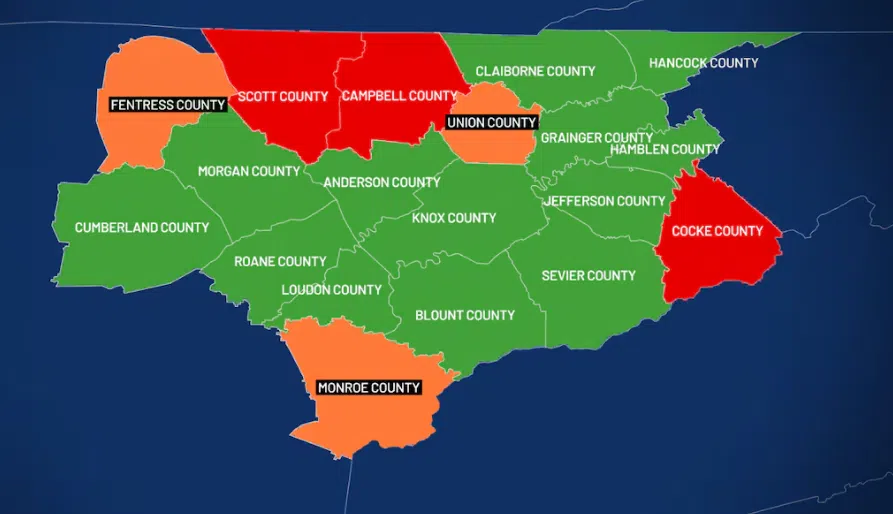KNOXVILLE, TN (Story courtesy of WVLT) – The Tennessee Department of Education released its annual accountability designations for school districts statewide, revealing varying performance levels across East Tennessee.
The state issues the rankings each year to identify which school districts need improvement. The designations are based on multiple criteria including test scores, absenteeism rates, graduation rates and post-secondary data such as AP classes and dual enrollment programs.
The designations take into account test scores like TCAP, ACT and SAT, and English language proficiency.
The rankings are divided into five categories, with East Tennessee districts spread across four of them.

Newport City Schools earned the highest “exemplary” designation in the region.
13 East Tennessee districts received “advancing” status, including Knox, Blount and Sevier counties.
Three districts were ranked “satisfactory”: Fentress, Monroe and Union counties.
Three East Tennessee districts received the lowest ranking of “in need of improvement”: Cocke, Campbell and Scott counties.
All three districts that received the lowest ranking experienced a decline from the previous year. Scott and Cocke counties were both in the advancing category the year prior, while Campbell County was in the satisfactory category.
Despite the district’s overall ranking decline, five schools in Cocke County were designated as “Reward schools”, recognizing high achievement and growth. Those schools are Bridgeport, Cosby Elementary, Del Rio, Grassy Fork and Smoky Mountain.
“We achieved this by improving student success rates across reading, math, science, and social studies, lowering chronic absenteeism, increasing English language proficiency scores, and strengthening graduation rates. We’re proud of this progress, especially after moving up from Satisfactory last year, and we’re excited to keep working toward Exemplary, the highest designation,” the Claiborne County district said on Facebook.
Cocke County officials said certain groups didn’t grow as much academically as expected, including English language learners and students from Black, Hispanic or Native American backgrounds.
“It’s worth noting that this data does not account for the significant disruptions caused by Hurricane Helene in the 2024-2025 school year. Our district missed a total of 22 school days, with some remote learning added to ease the transition back. The hurricane took a heavy emotional and psychological toll on our students, staff, and community during the storm and recovery efforts—no adjustments or exemptions were applied to the data for these circumstances,” Cocke County Instructional Supervisor Amanda Waits said.
Cocke County Mayor Rob Mathis said the new innovation center is just one step in the right direction.
“The Cocke County School System continues to develop and enhance educational programs for the school-age citizens of our county. The Innovation Center, which opened up this January, is a great example of this spirit of continuous improvement,” Mathis said. “I believe the recent setback is due, in large part, to the impact of Hurricane Helene and its aftermath on our community.”
Cocke County said they are encouraged by positive trends they are seeing, including third grade reading scores that surpass the state average with 43.1 percent of students reaching proficiency.
The district said a lot of work is already being done to improve performance.
Scott County Director of Schools Bill Hall said the designation was “obviously a disappointment for our community, especially since we were designated as ‘advancing’ the last two years.”
“Our goal is to always improve the educational opportunities for all our students and staff. We do not doubt that we can achieve success as we have had four of seven schools in our system that have been designated as a ‘Reward School’ in the last three years, including one this year,” Hall said. “Scott County Schools are proud of our students and staff for their hard work and dedication.”
The accountability system is designed to help the state identify areas where school districts require additional support and resources for improvement.









